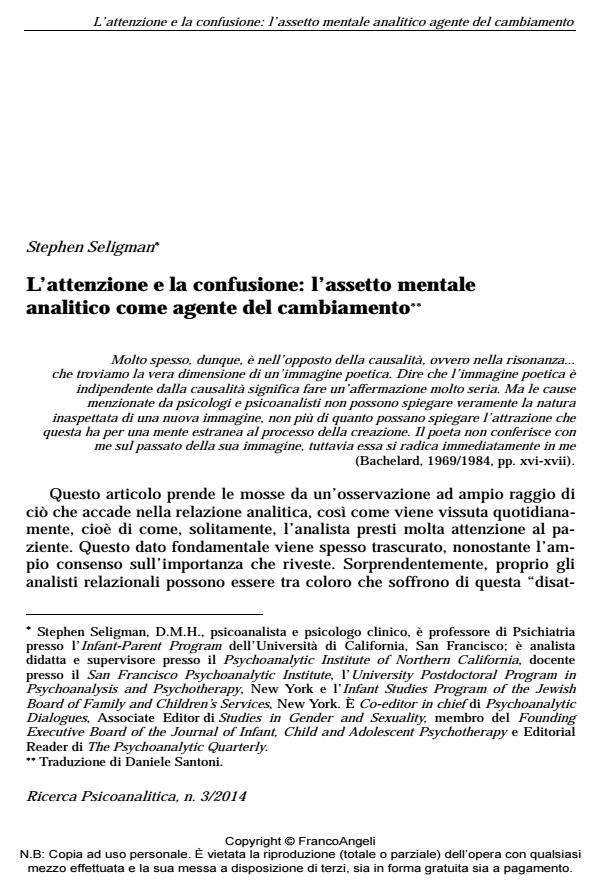Attention and confusion: the analytical mental setup as agent of change
Journal title RICERCA PSICOANALITICA
Author/s Stephen Seligman
Publishing Year 2014 Issue 2014/3
Language Italian Pages 21 P. 9-29 File size 107 KB
DOI 10.3280/RPR2014-003002
DOI is like a bar code for intellectual property: to have more infomation
click here
Below, you can see the article first page
If you want to buy this article in PDF format, you can do it, following the instructions to buy download credits

FrancoAngeli is member of Publishers International Linking Association, Inc (PILA), a not-for-profit association which run the CrossRef service enabling links to and from online scholarly content.
This paper starts from a wide-ranging observation of what takes place in an analytical relation in its daily unfolding, usually meaning that the analyst pays special attention to the patient. First of all the paper highlights the importance of uncertainty in analytical work with particular reference to the theories of non linear system dynamics that locate complexity and unpredictability at the core of their models and esthetics: the mathematical and scientific validity of these theories gives value to the psychoanalytical sensitivity that is able to accept ambiguity. It then returns to the analyst’s attention as basic element for working towards change.
Keywords: Attention, analytical mental setup, relational psychoanalysis, complexity, non-linear system dynamics, unpredictability
Stephen Seligman, L’attenzione e la confusione: l’assetto mentale analitico come agente del cambiamento in "RICERCA PSICOANALITICA" 3/2014, pp 9-29, DOI: 10.3280/RPR2014-003002